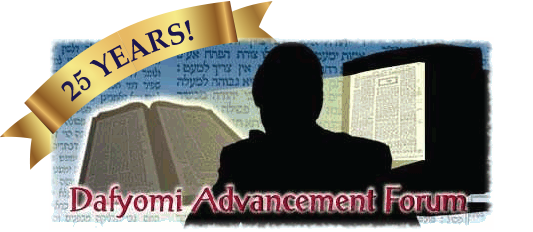Why does the Torah insert the 'Hey' in "ve'ha'Beged"?
Shabbos, 26b: To include a piece of cloth that is three by three fingerbreadths in the Din of Nig'ei Begadim. 1
Sifra: To include a Beged of Sha'atnez in the Din of Nig'ei Begadim. 2
Why does the Torah insert the 'Vav' in "ve'ha'Beged"?
Sifra: To connect it with the previous Pasuk - to teach us that stricken Begadim must be sent out of the camp just like stricken people.
What can we learn from the comparison of a woolen garment to a linen one?
R. Bachye: To preclude the wool of a non-Kasher animal (such as a camel) from the realm of Tzara?as. 1
Sifra: To compare wool to linen which is normally not dyed), to confine the Din of Nig'ei Begadim to white woolen garments - and not to colored ones. 2 3
Bechoros, 17a: To compare wool to linen, which is natural (unchanged) - to preclude the wool of a Nidmeh (a lamb whose mother is a goat) from the Din of Nig'ei Begadim.
Why does the Torah repeat the word "Beged" so many times in the current Pesukim?
Sifra #1 (according to R. Yehudah): To teach us that, like Beged, all the various items that are mentioned in the following Pasuk only become subject to Nig'ei Begaim after they are completed - 'Shesi' (of wool), after it has been boiled, 'Areiv' (of wool) immediately and pieces of flax, as soon as they have been bleached.
Sifra #2: To teach us that all the items are only subject to Nig'ei Begadim if they have been woven at least the Shi'ur of three by three fingerbreadths. 1
Sifra #3: It precludes the strands that protrude from the Beged of each item from the Din of Nig'ei Begadim. 2
What is the significance of the fact that Tzara?as sometimes appears on a person, sometimes on his clothes and sometimes on his house?
R. Bachye (based on Midrash Rabah Rus): The Master of compassion does not punish a person on his body first! He first strikes his property (his house), and if he does not do Teshuvah, his clothes. and finally, if he still persists on sinning, he strikes his body. 1 2
R. Bachye: And it is by the same token that the sequence continues on the body ? first on his head or beard, then on the location of a boil or a burn and finally in the form os Se?eis, Baheres or Sapachas - the most stringent of all. Remarkably, according to R. Bachye?s explanation, the Torah presents the entire gamut of the forms of Tzara?as ? from Tzara?as on the house to Baheres, Se?eis and Sapachas, backwards! - Refer to 14:55:1:1.
What is so terrible about Lashon ha?R, that thee Torah designates virtually two whole Parshiyos in connecton with ots punishment?
R. Bachye (citing the Tanchuma) #1: Lashon ha?Ra is worse than murder, 1 inasmuch it kills not only one person, but three ? the person who speaks, the person who hears (and accepts) it and the person about whom it is spoken. 2
R. Bachye (citing the Tanchuma) #2: Lashon ha?Ra, which, like an arrow, 3 can kill even someone who is far away, is more lethal than a sword.
R. Bachye (citing the Tanchuma) #3 (citing Mishlei 1:21): ?Death and life lie in the hands of the tongue!? Death in the form of Lashon ha?Ra. 4 - which causes death life in the form of learning Torah 5 ? which brings life.
In fact, the Chachamim consider Lashon ha?Ra worse than the three cardinal sins murder, adultery and idolatry. See R. Bachye, ibid.
R. Bachye ibid.:Like we find by Do?eg ha?Edomi, who spoke Lashon ha?Ra about Achituv the Kohen Gadol of Nov, and as a result, Achituv, Shaul and Do?eg (who perished from this world and the next) died. See R. Bachye.
R. Bachye ibid.: Hence the Navi in Yirmiyah 9:7 compares Lashon ha?Ra to an arrow - ?Chetz Shachut Leshano ? ?. Perhaps one may add that, like an arrow that has left the bow, once Lashon ha?Ra has been spoken, it cannot be withdrawn.
As the Torah writes in Bamidbar 12:12 ? ?Al Na T?hi ka?Meis? -in connection with the Tzara?as of Miriam - See Rashi.
R. Bachye, ibid.: As the Pasuk writes in Mishlei ?Eitz Chayim Hi?.
Why does the Torah insert the Parshah of Nig'ei Begadim in between Nig'ei Adam and Taharah from Tzara'as?
Hadar Zekenim in Pasuk 46 (citing the Bechor Shor): Because , since there is no such thing as a Metzora who does not need to Tovel his clothes, the Torah teaches the Taharah of Adam and of Begadim together.
Why does the Torah write "ve'ha'Beged asher Yih'yeh bo ha'Nega" and not "Ki Yih'yeh Nega ba'Beged"?
Ramban and Seforno: In order to highlight the fact that Tzara?as on the clothes (and on the house, and even on the body ? Ramban) is a phenomenon that can only be ascribed to a Divine miracle 1 ? due to the sins of the owner (regarding the dyes or work connected with dying 2 - as it is impossible to occur naturally ? Seforno).
Moshav Zekenim: It alludes to the Isur of wearing the boastful clothes of Nochrim, since their priests have a symbol of idolatry on their garments.
See R. Bachye in Pasuk 58, who concurs with this explanation ? see R. Chavel?s footnotes in Pasuk 56 ? though he does not connec it with the current Pasuk.




